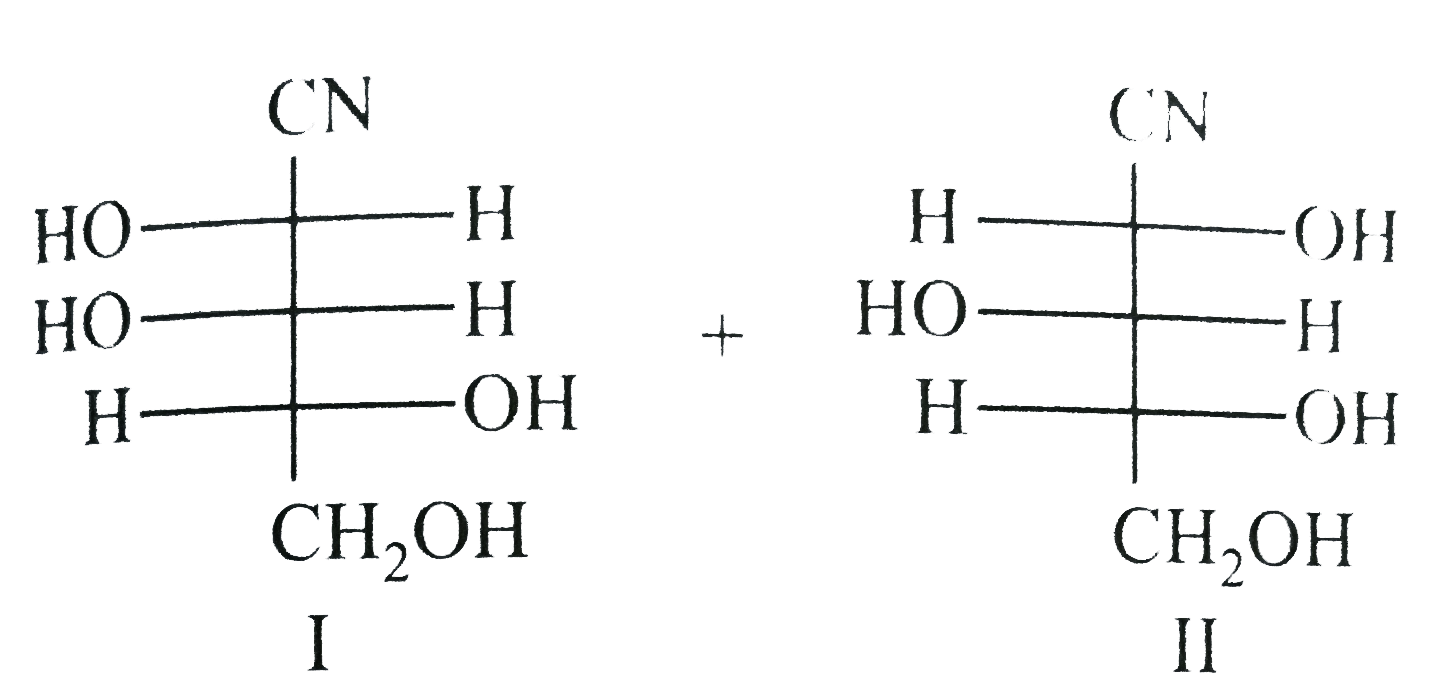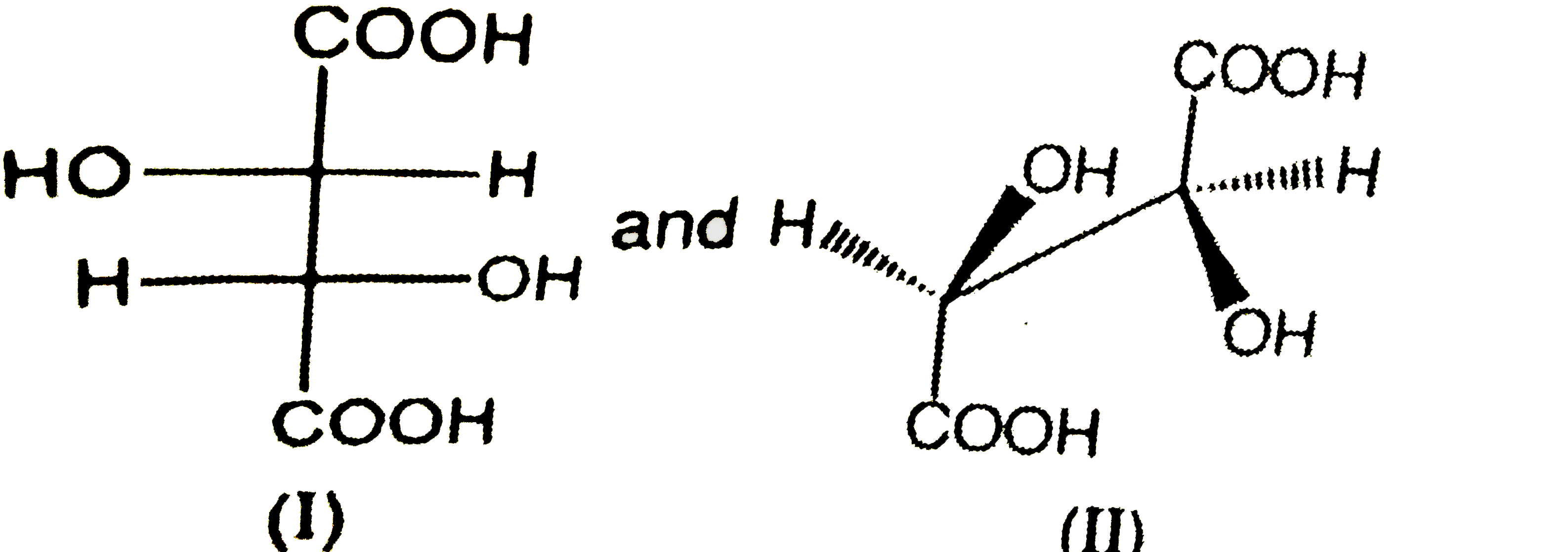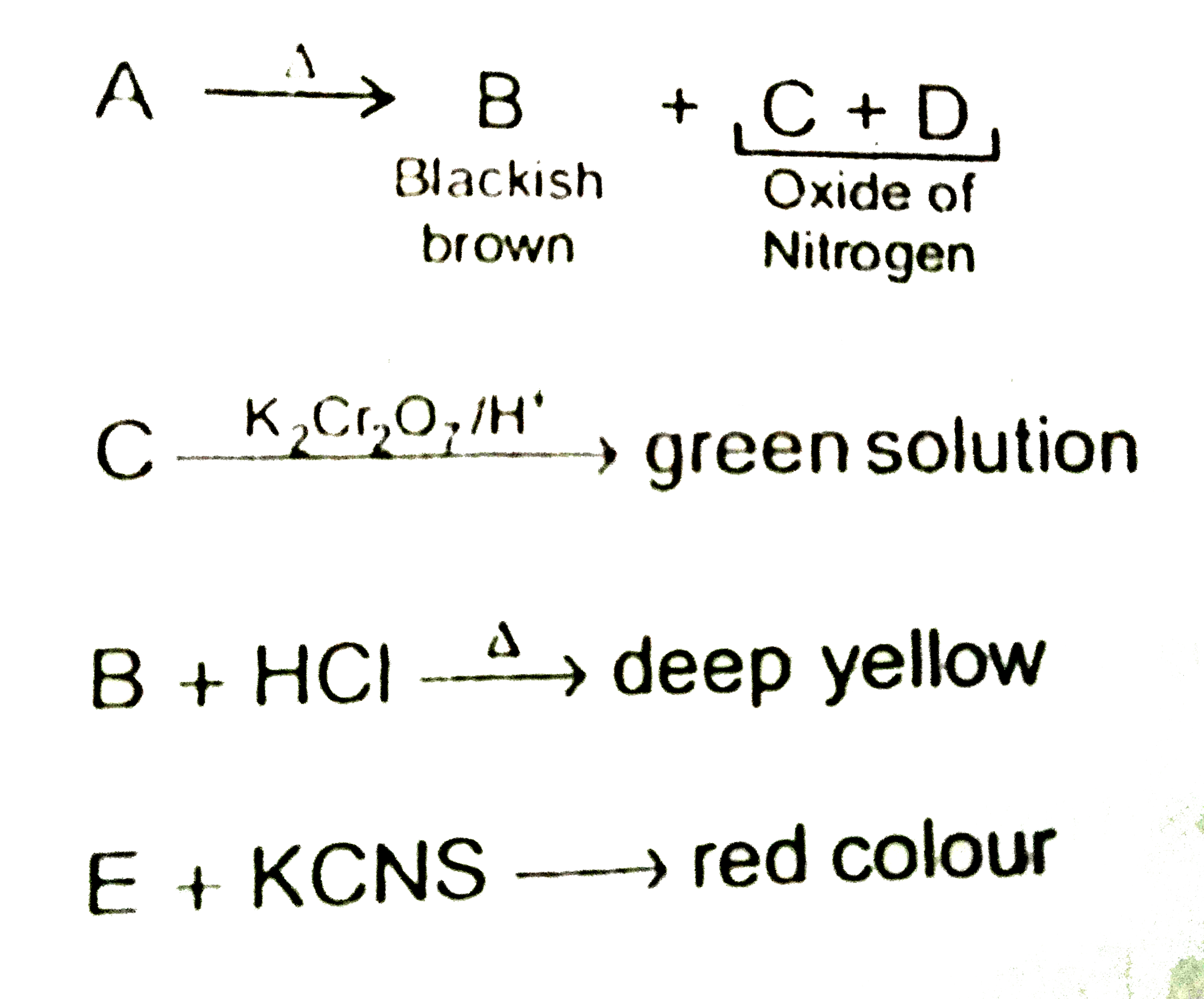

Compounds I and II may be grouped as
diastereomers
epimers
C−2 epimers
all of the three
The correct Answer is:D
When structure I and II are C−2 epimers. It implies that these are epimers and diastereomers too.
Topper's Solved these Questions
- BIOMOLECULESBOOK - A2ZCHAPTER - BIOMOLECULESEXERCISE - Chemistry in everyday life
7 Videos
- ALDEHYDES, KETONES AND CARBOXYLIC ACIDBOOK - A2ZCHAPTER - ALDEHYDES, KETONES AND CARBOXYLIC ACIDEXERCISE - Section D - Chapter End Test
30 Videos
- CHEMICAL KINETICSBOOK - A2ZCHAPTER - CHEMICAL KINETICSEXERCISE - Section D - Chapter End Test
30 Videos
Similar Questions
Knowledge Check
Product P & Q may be grouped as
 ADiastereomersBEnantiomersCAnomersDNone of these
ADiastereomersBEnantiomersCAnomersDNone of theseThe two compounds (I) and (II) are related as :
 AEnantiomersBAnomersCDiastereomersDIdentical
AEnantiomersBAnomersCDiastereomersDIdentical
Select the correct statement about compound I and compound II from the following :AI gives resolvable product with Br2/CCl4.BII gives non-resolvable product with Br2/CCl4.CI gives different product with HBr in presence or absence of peroxide.DII gives same product with HBr in presence or absence of peroxide.

The compound A may be
View Solution(a) Statement I is true, Satement II is true, Statement II is the correct explanaition of Statement I.
(b) Statement I is true, Satement II is true, Statement II is not the correct explanaiton of Statement I.
(c ) Statement I is true, Statement II is false
(d) Statement I is false : Statement II is true
2. Statement I : Pb4+ compounds are stronger oxidising agents than Sn2+ compounds .
Statement II : The lower oxidation states for the group 14 elements are more stable for the heavier members of the group due to 'inert pair effect'
View SolutionThe correct relation between compound(s) I and II is/are

View SolutionNucelophilic aliphatic substitution reaction is given by those compounds which have nucleophiic groups as leaving. Less is the basicity of the leaving group. More is its leaving power. Leaving group in the form of nucleophile (charged of neutral)
Leaving power of which groups is maximum ?
Which one of the following compounds may NOT given SN rection ?
View SolutionThe correct relation between compound(s) I and II is/are

View Solution
